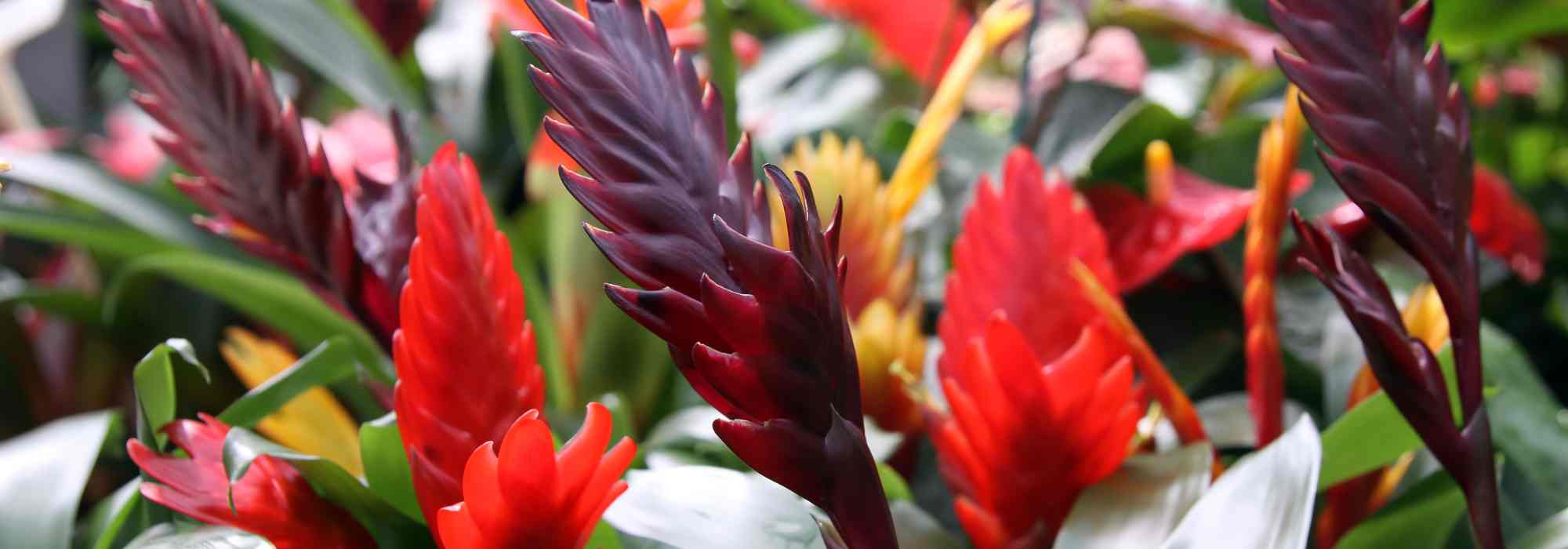
Vriesea: cultivation, flowering and care of this plant
Contents
Vriesea in a nutshell
- It is an exotic indoor plant that captivates with its flowering in very colourful bracts
- We also love its glossy rosette foliage
- Robust and easy to care for, it enjoys a bright atmosphere without direct sunlight
- It requires a slightly humid environment and very well-drained soil
- Ideal for adding a touch of exoticism and colour to your decor
A word from our expert
The (or the) Vriesea is a houseplant that captivates with its resilience and graphic appeal! Original, colourful, and exotic, it is appreciated for its elegant rosette habit and its spectacular flowering in the shape of a coloured flame. Its flat, ribbed bracts, reminiscent of a stylised feather, and its decorative foliage, sometimes striped or marbled, add a touch of exoticism to any interior, from the living room to the conservatory.
Vriesea or Guzmania? These often-confused Bromeliads look similar, but the Vriesea is distinguished by its flat, ribbed bracts and its more textured foliage.
The flowering of the Vriesea does not go unnoticed. Its brightly coloured bracts, red, orange, or yellow, illuminate the interior, especially if the Vriesea is provided with a bright, but filtered light.
The Vriesea is not a particularly demanding houseplant. The cultivation of the Vriesea is simple, provided its needs are respected. The maintenance of the Vriesea remains accessible even to beginners; regarding watering of the Vriesea, it is sufficient to lightly fill the central rosette with clean, non-calcareous water and to keep the substrate slightly moist, without excess stagnant water.
After flowering, the offsets of the Vriesea, small shoots formed at the base of the plant, can be taken and repotted to ensure the plant’s renewal. A simple way to prolong the enjoyment while starting a lovely little collection of decorative Bromeliads!
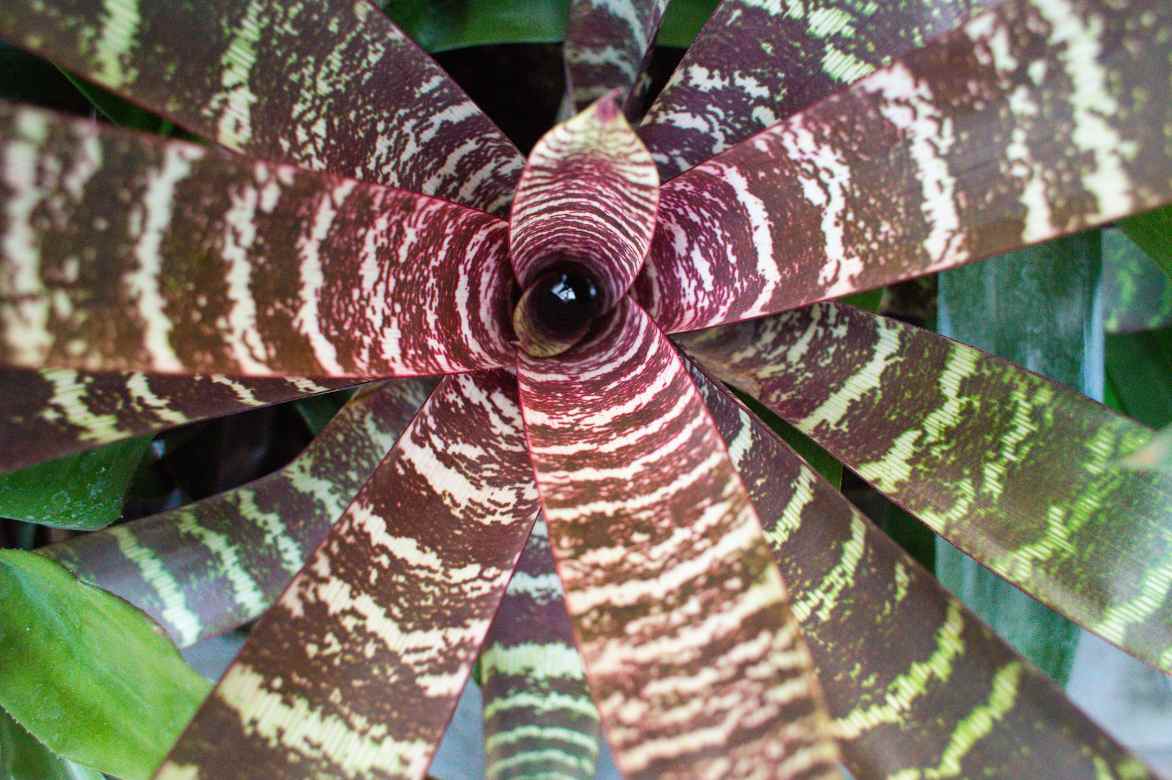
Vriesea splendens
Description
Botanical data
- Latin name Vriesea
- Family Bromeliaceae
- Common name Flamingo plume
- Flowering spring-summer
- Height Between 15 and 80 cm
- Exposure bright light without direct sunlight
- Soil type Light potting soil, draining potting soil, orchid potting soil
- Hardiness Frost-sensitive
The Vriesea belongs to the Bromeliaceae family, which includes many tropical epiphytic plants, such as the famous Guzmania and Puyas, also known for their spectacular inflorescences. It is sometimes referred to as “Flamingo plume,” in reference to its brightly coloured bracts and its elongated silhouette that evokes a tropical feather.
Native to the tropical forests of Central and South America, this bromeliad colonises the humid canopies of Brazil, Colombia, and Costa Rica. It grows attached to the trunks or branches of trees, developing as an epiphyte without drawing from the soil, thus benefiting from filtered light and ambient humidity. This aerial lifestyle allows it to thrive away from the competition of the understory, in a bright environment, but protected from direct sunlight.
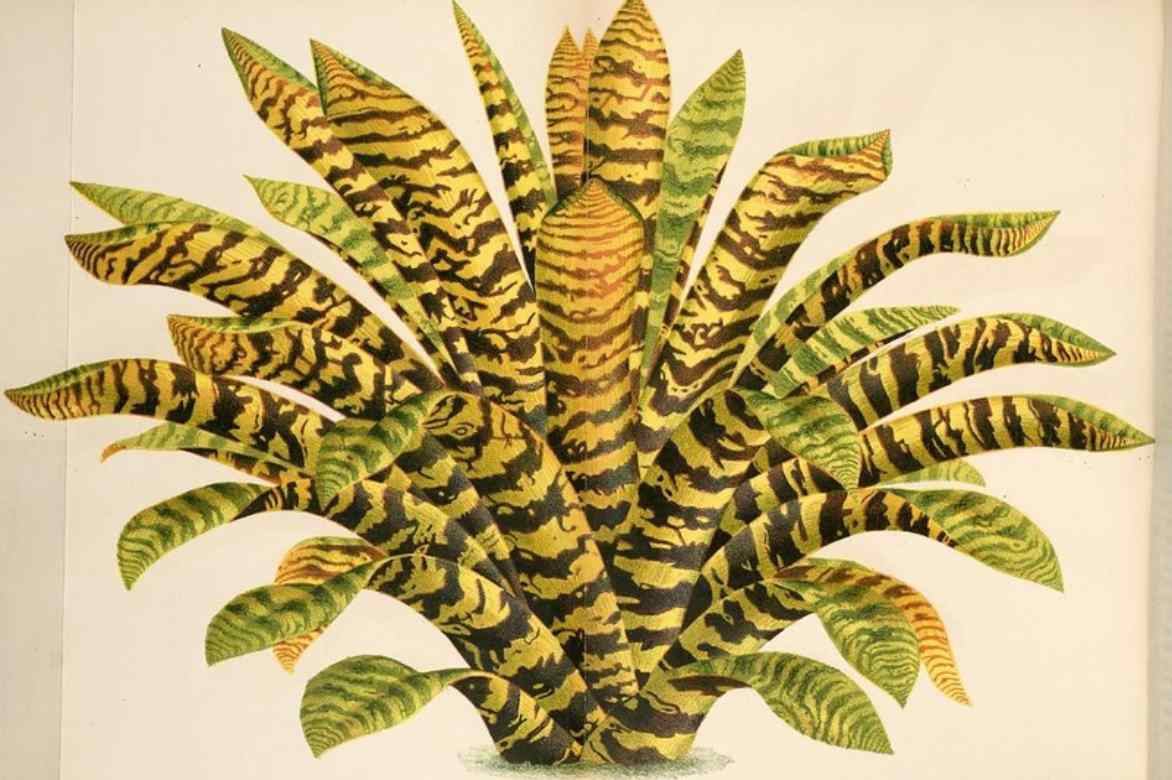 Vriesea hieroglyphica (botanical plate circa 1860)
Vriesea hieroglyphica (botanical plate circa 1860)
Here, the Vriesea is cultivated indoors due to its high sensitivity to cold. A quintessential tropical plant, it cannot tolerate temperatures below 15 °C, which limits its cultivation to heated verandas or bright rooms in our homes.
The genus Vriesea comprises around 250 recorded species, along with numerous horticultural varieties created to enhance the ornamental diversity of these tropical plants. Vriesea splendens is the type species of the genus, famous for its striped foliage and bright red bracts, which are the source of many horticultural varieties. Also widely cultivated, Vriesea carinata is valued for its vibrant flowering and compact size, making it an essential species for indoor settings. These two species are the basis for the majority of decorative hybrids found in our homes, such as Vriesea ‘Favoriet’, Vriesea ‘Ida’ or Vriesea ‘Madonna.’
The Vriesea has a dense and symmetrical rosette habit, formed by a set of leaves arranged in a spiral, rising from the base to create a structure that is both compact and elegant. This plant lacks a visible trunk, with its development focusing around a central heart that serves as both the growth point and the natural water reservoir, typical of bromeliads. Its root system is underdeveloped, primarily designed for anchorage when growing as an epiphyte on the branches or trunks of trees, rather than for conventional deep absorption.
 The brilliance of the Vriesea comes from both its spectacular flowering and the colours and shape of its foliage
The brilliance of the Vriesea comes from both its spectacular flowering and the colours and shape of its foliage
Depending on the species and variety, the Vriesea reaches a height of between 15 and 80 centimetres, sometimes more in the most vigorous varieties. The foliage consists of long, ribbon-like leaves, leathery, slightly arching outward, with a smooth texture and smooth edges, often marked with transverse patterns, striped or marbled depending on the species. The colour of the foliage ranges from light green to dark green, sometimes enhanced with silvery hues or contrasting characteristic bands.
In indoor cultivation, flowering generally occurs between spring and summer. Remarkable, it is distinguished by an upright flower spike, emerging from the centre of the rosette, bearing a flattened inflorescence, in a spike or plume shape, composed of flat or slightly curved imbricate bracts, in vivid colours ranging from red to yellow, passing through orange or pink. These persistent bracts envelop small, discreet tubular flowers, rich in nectar. In their natural habitat, these nectariferous flowers attract pollinators such as hummingbirds or insects. These colourful bracts, which provide the main decorative aspect of the plant, can persist for several weeks to several months, often between 2 and 5 months, depending on the species, variety, and growing conditions.
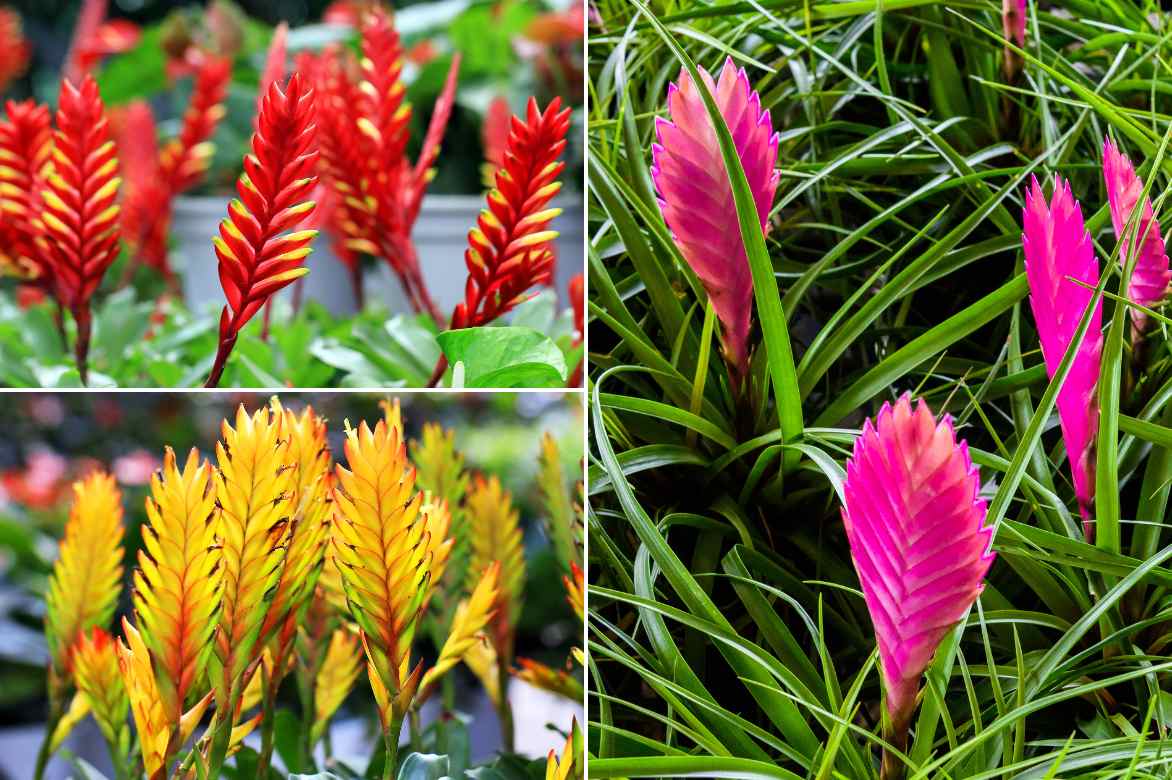 Bright red, pink or yellow: the flowering of the Vriesea is completely exotic
Bright red, pink or yellow: the flowering of the Vriesea is completely exotic
This spectacular flowering is unique in the plant’s life cycle: it precedes the gradual senescence of the main rosette. The Vriesea is a monocarpic plant, meaning that it dies after flowering. Fortunately, before it withers, the main rosette produces offsets at its base, thus ensuring the continuity of the plant and allowing for its propagation.
Fruit set is rare in indoor cultivation, but in natural conditions or optimal settings, it gives rise to elongated capsules containing fine, light, and fluffy seeds, adapted for wind dispersal.
Our species and varieties of Vriesea
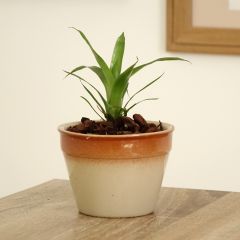
Vriesea Delphinius - Flaming sword plant
- Flowering time July to October
- Height at maturity 20 cm

Vriesea carinata Christiane - Flaming sword plant
- Flowering time July to October
- Height at maturity 40 cm
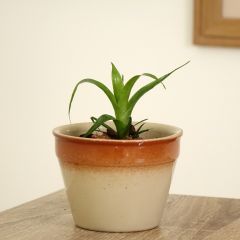
Vriesea Kallisto - Flaming sword plant
- Flowering time July to October
- Height at maturity 40 cm
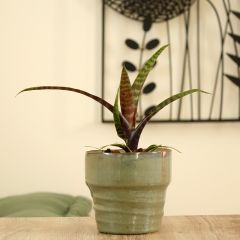
Vriesea Favorite - Flaming sword plant
- Flowering time July to October
- Height at maturity 40 cm
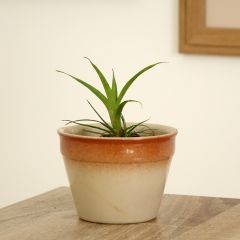
Vriesea Madonna - Flaming sword plant
- Flowering time July to October
- Height at maturity 45 cm
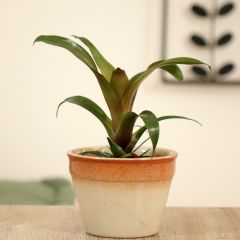
Vriesea Ida - Flaming sword plant
- Flowering time July to October
- Height at maturity 35 cm
Discover other Vriesea - Flaming sword plant
View all →Available in 1 sizes
Available in 1 sizes
Available in 1 sizes
Available in 1 sizes
Available in 1 sizes
Available in 1 sizes
Available in 2 sizes
Available in 1 sizes
Available in 1 sizes
Planting Vriesea
Exposure of Vriesea
Indoors, Vriesea prefers to settle in a bright room, sheltered from cold drafts and direct heat sources such as radiators. It finds its place on a windowsill facing east or north, in a bright office, a temperate conservatory, or even a well-lit bathroom, where it benefits from slightly higher ambient humidity. The important thing is to provide it with a stable environment, protected from sudden temperature fluctuations.
Vriesea appreciates bright indirect light that stimulates its growth and flowering without risking burning its foliage. It tolerates the gentle morning sun, especially in winter, but overly intense direct rays, particularly in the afternoon, cause spots or drying of the leaves.
Indoor growing conditions must meet the tropical needs of the plant. The ideal temperature is between 18 and 26 °C. Below 15 °C, Vriesea shows signs of weakness, its growth slows down, and it becomes more susceptible to diseases. It is therefore reserved for indoor or heated conservatory cultivation, especially in temperate regions. Vriesea can be taken outside in summer when temperatures remain between 18 and 26 °C. It should be placed in shade or partial shade, away from direct sunlight. As soon as temperatures drop below 15 °C, it must be brought back indoors.
The recommended humidity level is between 50 and 70 %. In dry atmospheres, especially in winter with heating, it is advisable to install a humidifier or place the pot on a bed of moist clay balls.
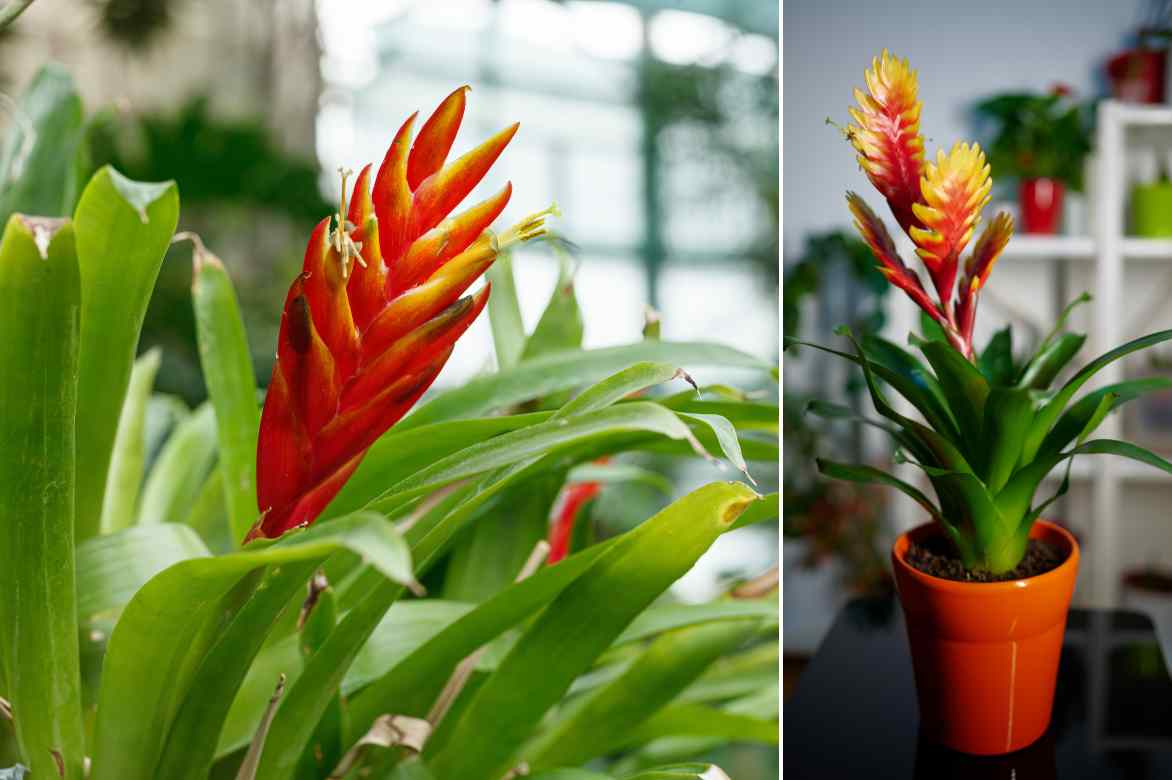 Vriesea thrives in a bright environment
Vriesea thrives in a bright environment
When to plant?
Planting Vriesea can be done all year round. Our young plants, offered in plug plants, are ready to be repotted as soon as purchased. However, it is recommended to plant outside of the flowering period to avoid disturbing the plant.
How to pot it?
The ideal substrate for Vriesea
Vriesea, like all bromeliads, requires a light, airy, and very well-drained substrate, specific to epiphytic plants. A special bromeliad potting mix is ideal. If not available, a suitable mix can be prepared based on:
- 40 % pine bark
- 30 % of perlite or sand
- 20 % coconut fibres
- 10 % sphagnum
- A layer of clay balls at the bottom of the pot is essential for drainage
The steps
- Choose a pot with drainage holes that is 2 to 4 cm larger in diameter than the plant; for example, for a plug plant, a pot of 8 to 10 cm is sufficient.
- Install a drainage layer at the bottom (clay balls or gravel).
- Plant the plug plant in the mix, ensuring that the heart of the rosette is never buried.
- Gently firm the substrate around the roots without compressing too much.
- Water lightly after planting, pouring water into the central rosette and onto the substrate.
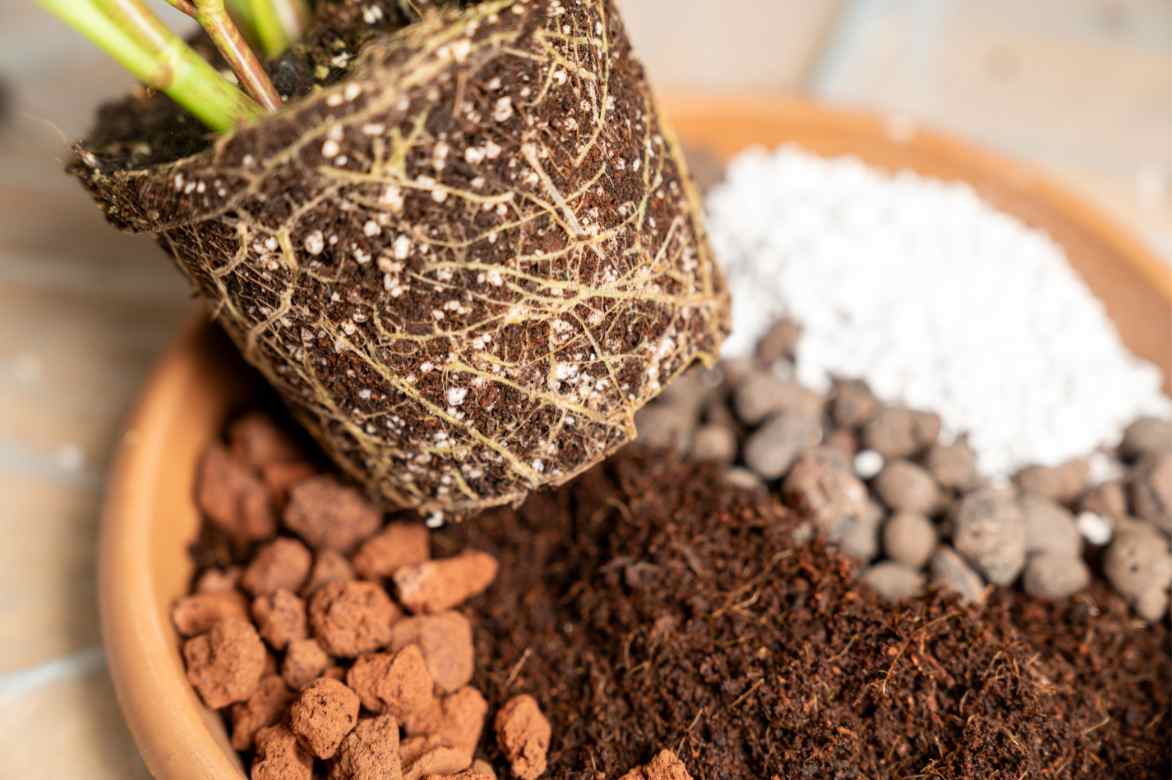 Plant in a mix of light materials: coconut fibre, perlite, and sphagnum, along with some gravel
Plant in a mix of light materials: coconut fibre, perlite, and sphagnum, along with some gravel
Caring for Vriesea Indoors
The cultivation of Vriesea indoors is relatively simple if its specific needs related to its tropical origins are respected. This plant enjoys a bright, warm, and humid environment, with a substrate that is always well-drained.
Watering The roots of Vriesea are sensitive to excess water. Watering Vriesea should be done directly into the central rosette, which serves as a natural reservoir of water. It is recommended to use non-limestone water at room temperature to avoid deposits in the rosette and burns on the foliage. The substrate should be kept slightly moist, but never soggy. Between waterings, allow the surface of the mix to dry to limit the risk of rot.
- In spring and summer: weekly watering.
- In winter, reduce the frequency to every 15 days, or even less.
Spraying
Occasional spraying is recommended only in dry air, especially in winter when heating dries out the atmosphere. It is important to lightly spray around the foliage, never wetting the heart of the rosette, to avoid any risk of rot.
Precautions Vriesea is particularly sensitive to collar and root rot if water stagnates in the pot or if the heart of the rosette remains saturated with cold water. It is imperative to regularly empty residual water during cool periods or in low light conditions.
Fertilisation A supply of liquid fertiliser for flowering or green plants can be applied once a month, diluted in the watering water, only during the growth period, between spring and the end of summer. Avoid any excess fertiliser, which could damage the roots or burn the foliage.
Pruning Pruning Vriesea is limited to the removal of faded or damaged leaves and the removal of inflorescences once dry. The offsets produced at the base can be kept to form a dense clump, or separated and replanted individually.
Repotting Vriesea Repotting is done every two to three years, or as soon as the plant seems cramped. Wait until the end of flowering to repot.
Vriesea diseases
Although Vriesea is a robust plant, it can be susceptible to certain parasites or diseases if the growing conditions are not respected, particularly in cases of excess moisture or overly dry air.
| Problem | Main Cause | Natural Solution |
|---|---|---|
| Mealybugs | Overly dry air, lack of ventilation | Manual removal with alcohol, rinsing foliage, diluted black soap |
| Aphids | Heat and humidity promote their appearance | Rinsing with lukewarm water, spraying with black soap or garlic infusion |
| Mites (red spiders) | Atmosphere too dry | Increase ambient humidity, moderate misting around (without touching the rosette), treatment with black soap |
| Collar rot | Excess water in the rosette or waterlogged substrate | Empty stagnant water, space out waterings, improve drainage |
For more details, read: Mealybugs: identification and natural treatments and Red spiders: identification and treatment.
How to propagate a Vriesea?
The simplest and most common method is the division of Vriesea offsets, which appear at the base of the plant after flowering. Sowing is possible, but reserved for enthusiasts, as the plant must produce seeds, which is rare indoors. Vriesea, like most Bromeliaceae, does not lend itself to classic propagation by cuttings: it does not form either a ramified stem or a segment that can be propagated.
Division of Offsets
- Wait for the Vriesea offsets to reach at least 10 to 15 cm and develop some roots.
- Then gently separate them from the mother plant.
- Replant them individually in a pot with a light, well-draining substrate, without burying the heart of the rosette.
Decor and associations of Vriesea
With its graphic appearance and vibrant colours, Vriesea stands out as an elegant and exotic houseplant. Its perfect rosette and spectacular inflorescences allow it to find its place in all bright and not too dry rooms of the house, whether it be a contemporary living room, a green bathroom, or a slightly heated conservatory in winter.
To create a trendy tropical composition, combine a Vriesea ‘Christiane’, with its tall habit and bright red flowering, with other bromeliads like the Guzmania ‘Hilda’ in bright yellow shades. On a console, a natural wood shelf, or a coffee table, these plants will form a vibrant green tableau full of character.
And for lovers of original varieties, dare to create an exotic scene by pairing the Vriesea ‘Favoriet’ or the bicolour Vriesea ‘Vogue’ with the Guzmania ‘Calypso’, with its intense red hues, and the Aechmea, also known for its spectacular inflorescence.
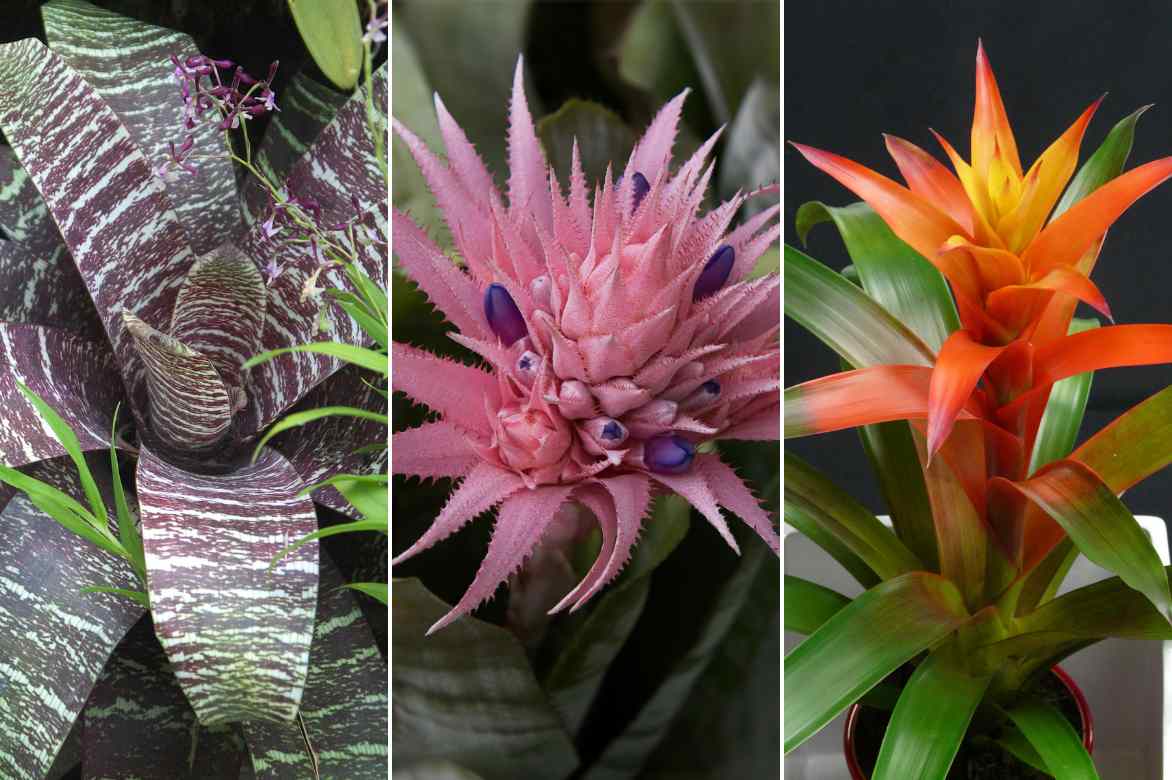
Vriesea fosteriana, Aechmea and Guzmania
Also read
→ Discover our wide range of indoor plants.
→ Our decorative foliage indoor plants and our flowering indoor plants.
→ Our books on indoor plants.
Frequently asked questions
-
How to make my Vriesea bloom again?
To make a Vriesea bloom again, you need to wait for the offsets produced at the base to grow. Once separated and replanted, these young plants will generally take 2 to 3 years to flower in turn, provided they are given bright light, warmth (18-26 °C), and good humidity. The mother rosette, however, does not bloom again.
-
How to cut the flowers of a Vriesea?
To cut the flowers of a Vriesea, you must wait until the inflorescence has completely faded and the bracts have lost their colour. Using clean and sharp pruning shears, cut the flower spike at the base, just above the foliage, without damaging the rosette. This operation helps to keep the plant tidy and encourages the development of offsets at the base.
- Subscribe!
- Contents
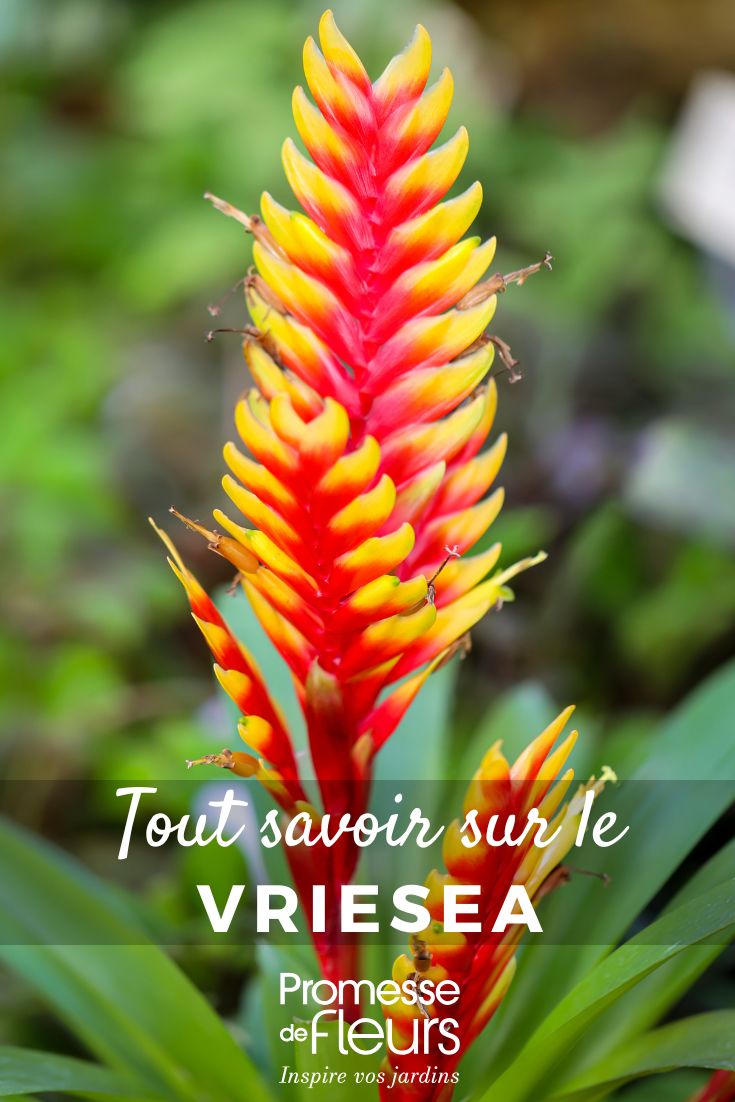
































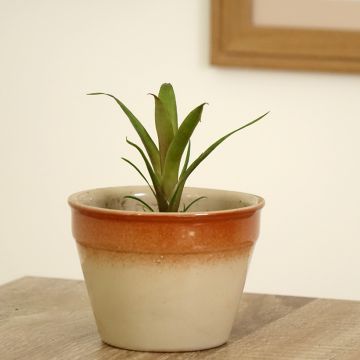
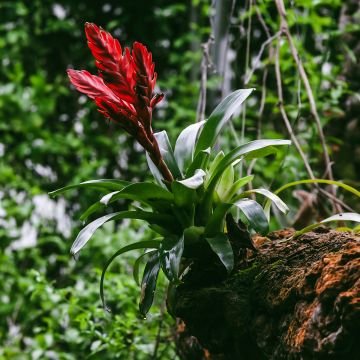

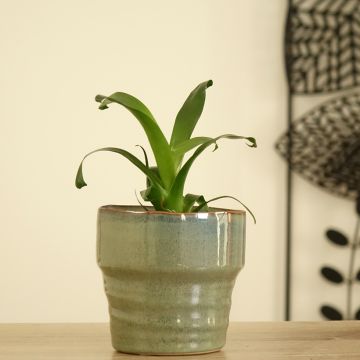
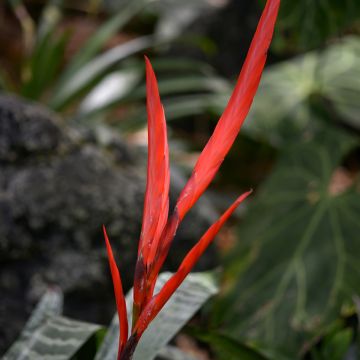



Comments